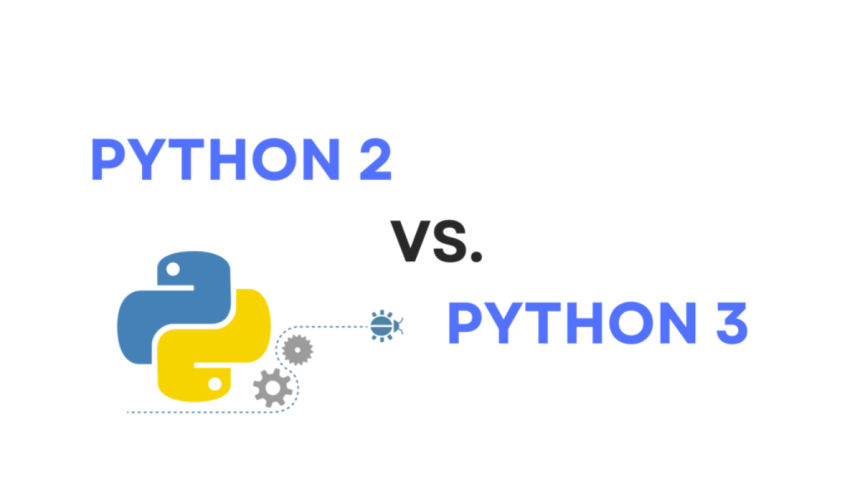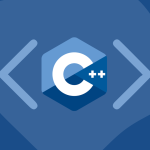Key Highlights
- Python, a popular programming language, has two main versions: Python 2 and Python 3.
- Python 3, released in 2008, aimed to address design flaws in Python 2 and introduce new features.
- Key differences include print function syntax, integer division behavior, and Unicode string handling.
- While Python 2 reached its end of life in 2020, it’s still relevant for maintaining legacy code.
- This blog post explores these differences, their impact on developers, and factors influencing version choice.

Introduction
Python, a powerful and versatile programming language, is a popular choice for beginners and veterans alike. Over the years, this programming language has undergone significant evolution, resulting in different versions with distinct features. Among these, Python 2 and Python 3 are the most recognized. While Python 3, with its advanced features and updates, is recommended for new projects, understanding the key differences between these two versions is crucial for developers.
Understanding Python’s Evolution
Python’s journey began in the late 1980s, culminating in the release of Python 2.0 in 2000. This version gained immense popularity due to its ease of use, clear syntax, and a wide range of libraries, making it a favorite among developers. However, as Python evolved, certain limitations and design choices in version 2 became apparent.
To address these shortcomings and embrace new trends in programming, Python 3 was released in 2008. The aim was to create a cleaner, more consistent, and future-proof version of Python. This led to some radical changes that made Python 3 incompatible with its predecessor, causing a stir in the Python community.
Overview of Python 2
Python 2, initially released in 2000, quickly gained traction as a flexible and powerful scripting language. Guido van Rossum, often hailed as the “Benevolent Dictator for Life” of Python, led its development, focusing on code readability and a clean syntax that resonated with developers. Python 2.7, released in 2010, marked the last major update for this branch.
While Python 2 enjoyed widespread adoption, certain design flaws became apparent over time. The handling of Unicode strings, for instance, posed challenges for developers working with diverse character sets. These limitations, along with the need to modernize the language, paved the way for Python 3.
Although Python 2 reached its end of life in 2020, it continues to be relevant for maintaining legacy systems. Many organizations still rely on software built with Python 2, creating a demand for developers who are familiar with this version.
Introduction to Python 3
Introduced in 2008, Python 3 emerged as a significant step forward in Python’s evolution. This latest version was not merely an update but a fundamental redesign aimed at addressing the shortcomings of its predecessors and incorporating new developments in programming paradigms.
Guido van Rossum, the creator of Python, continued to lead the development of Python 3, emphasizing a clean break from backward compatibility to pave the way for a more robust and future-proof language. This decision, though controversial at the time, aimed to liberate Python from legacy constraints.
Python 3 brought a wave of new features and syntax changes. Unicode support became native, integer division was refined, and new libraries were introduced, making Python 3 a powerful tool for modern programming tasks, from data science to web development.
Key Differences Between Python 2 and Python 3

While both Python versions share many similarities in terms of syntax and functionality, a few key differences impact code compatibility and developer experience. These differences primarily stem from the fundamental changes introduced in Python 3 to improve consistency and address inherent limitations in the language’s design.
Understanding these key differences is essential when choosing a Python version for a project. It’s crucial to evaluate the specific needs of the project, considering factors such as library support, code maintainability, and potential performance implications.
Syntax and Code Structure
One of the most immediately noticeable differences between Python 2 and Python 3 is the change in the print function. In Python 2, ‘print’ acts as a statement, whereas in Python 3, it is treated as a function, requiring parentheses to enclose the output. This change might seem trivial but adjusting to it is essential when migrating code between the two versions.
Another difference lies in how the division operator (/) behaves. In Python 2, integer division returns an integer, truncating any decimal values. For instance, 5/2 would yield 2. However, in Python 3, the division operator returns a floating-point number, resulting in 2.5 for the same operation. Python 3 introduced the // operator for floor division if an integer output is desired.
These changes may seem subtle but neglecting them can lead to unexpected results. Therefore, developers must be mindful of these syntactic and operational differences when working with Python 2 and Python 3.
Print Function Variations
The evolution of the print function from a statement in Python 2 to a function in Python 3 signifies more than just a syntax update, it reflects a deeper shift towards consistency and flexibility. In Python 2, ‘print’ acted as a statement, directly followed by the content to be printed. This often led to inconsistencies, especially when formatting output.
Python 3 addressed this by introducing ‘print()’ as a function, allowing for a more structured way to handle printed output. This streamlined syntax improves code readability and alignment with other functions in Python.
The transition to the ‘print()’ function in Python 3 not only enhanced clarity but also improved exception handling, making it easier for developers to identify and manage errors during code execution. This shift exemplifies Python’s commitment to iteratively refining the language, prioritizing both functionality and user-friendliness.
Unicode Support and String Handling
One of the most significant changes introduced in Python 3 pertains to how strings are handled. Unlike Python 2, where the default string type was ASCII, Python 3 embraced Unicode as the default string type. This fundamentally changed how characters were stored and processed.
This switch to Unicode strings in Python 3 has several implications:
- Improved Internationalization: Python 3 natively handles a wider range of characters from different languages, making it suitable for applications requiring multilingual support.
- Simplified Text Processing: Working with various character sets, including emojis, became streamlined, reducing the need for cumbersome workarounds that were often required in Python 2.
While this change enhanced Python 3’s capabilities in handling text data, it created a significant backward compatibility challenge. Code written in Python 2, relying on ASCII strings, required modification to run correctly in Python 3’s Unicode environment.
Impact on Developers and Coders in India
The transition from Python 2 to Python 3 has had a noticeable impact on the Indian developer community. As one of the largest technology hubs globally, India is home to a vast pool of Python developers working on diverse projects. This shift prompted many Indian companies and developers to invest in migrating their existing codebases and training their workforce on Python 3.
This transition presented both challenges and opportunities. While adapting to the changes in syntax and library compatibility required effort, it also pushed developers to adopt best practices and explore the new features offered by Python 3, ultimately enhancing their skills and employability in the evolving tech landscape.
Compatibility Challenges with Existing Projects
The introduction of Python 3, while groundbreaking, brought about a significant challenge: backward compatibility with Python 2. Legacy projects, often deeply ingrained in Python 2’s ecosystem, faced obstacles during migration. This lack of backward compatibility meant that code written in Python 2 could not be seamlessly executed in Python 3 without modifications.
The ramifications were particularly significant for large, complex systems where migrating to a newer version of a programming language involved a considerable amount of work. This process often entailed rewriting sections of code, updating libraries, and rigorous testing to ensure seamless integration. For many organizations, the decision to migrate was contingent on factors like the cost of migration, the urgency to adopt new features, and the tolerance for maintaining legacy code.
Ultimately, while migrating to Python 3 promised significant advantages in the long run, managing the transition from Python 2 required careful consideration and meticulous software engineering practices to ensure a successful migration.
The Transition Phase for Indian Developers
The shift from Python 2 to Python 3 marked a significant transition phase for Indian developers. With the increasing demand for data science and machine learning skills, Python 3, with its enhanced libraries and features, became the preferred choice for new projects. However, the existing codebases in many companies still relied on Python 2, requiring developers to work across both versions.
This duality prompted a learning curve, necessitating developers to upskill and familiarize themselves with the nuances of both versions. While the transition posed initial challenges, it also opened new opportunities. The need for Python 3 expertise fueled training programs and workshops, contributing to a more skilled and adaptable workforce.
As India continues to be at the forefront of the technology boom, adopting Python 3 was not merely a matter of keeping up with trends but a strategic move to harness the full potential of this versatile language in fields like data science, machine learning, web development, and beyond.
Technical Advancements in Python 3

Python 3’s introduction marked a pivotal point in the language’s journey, ushering in a wave of technical improvements and refinements. These advancements solidified Python’s position as a leading language in data science, machine learning, web development, and more.
One of the most notable enhancements in Python 3 was its native support for Unicode, making internationalization and handling of diverse character sets significantly easier. This, coupled with improved memory management, a refined garbage collector, and an emphasis on code readability, positioned Python 3 as the go-to choice for modern software development.
Enhanced Features for Modern Computing Needs
Python 3’s emergence coincided with the rise of data science, machine learning, and the increasing demand for artificial intelligence applications. The language’s evolution equipped it to address these burgeoning needs effectively. Libraries such as NumPy, Pandas, and Scikit-learn, tailored for data manipulation, analysis, and machine learning, flourished within the Python 3 ecosystem.
Moreover, Python 3 embraced asynchronous programming paradigms, enabling developers to create more efficient and responsive applications, particularly those handling large datasets and complex computations. This feature proved invaluable in the development of scalable solutions for data-intensive applications.
The consistent growth of the Python community, coupled with its commitment to open-source principles, fostered the rapid development and refinement of libraries and frameworks catering to artificial intelligence, data science, and other cutting-edge fields. This synergy ensured that Python 3 remained at the forefront of modern computing, driving innovation across industries.
Performance Improvements and Efficiency Gains
Python 3 addressed several performance bottlenecks present in its predecessor, leading to noticeable efficiency gains. One such improvement involved optimizing the garbage collector, resulting in better memory management and reduced overhead in handling unused objects. This optimization translated to faster execution times, particularly for applications dealing with large datasets.
The introduction of a more efficient interpreter in Python 3 further enhanced performance, allowing code to be executed more quickly. The combined effect of these improvements meant that developers could now build more responsive and resource-efficient applications, particularly beneficial for data-intensive tasks.
The commitment to performance optimization in Python 3 underscores its focus on addressing the evolving needs of the programming community. This dedication to efficiency ensures that Python remains a viable choice for developing high-performance applications across a wide range of domains.
Decision Making: Python 2 or Python 3?
Deciding whether to use Python 2 or Python 3 depends on several factors. While Python 3 is the clear choice for new projects due to its enhanced features, ongoing support, and a thriving ecosystem, certain situations may necessitate working with Python 2, particularly if you’re dealing with legacy systems.
Consider these points when making your decision:
- New Project: Start with Python 3, it reflects the latest advancements in the language.
- Legacy Systems: You might be limited to Python 2 if you are working with software built using this version and migration is not feasible. In such cases, it’s crucial to be aware of the potential security risks and limited library support associated with using an outdated version.
Factors to Consider for New Projects
Embarking on a new project with the latest version of Python (Python 3) is generally recommended. Python 3 embodies the latest advancements in language design, offering a robust foundation for your project. It incorporates valuable features absent in its predecessor, enhancing code readability, maintainability, and execution efficiency. Leveraging these contemporary features can streamline the development process and result in a more scalable and future-proof application.
Furthermore, starting with the current version ensures access to the newest libraries, frameworks, and tools actively developed and maintained by the vibrant Python community. This access proves particularly valuable for tasks like data science, machine learning, and web development, where the ecosystem thrives on continuous innovation and improvement.
By embracing Python 3, you align your project with the future trajectory of the language. This proactive approach helps avoid potential compatibility issues, reduces the need for future migrations, and grants you access to a richer set of resources.
Migrating from Python 2 to Python 3
Migrating from Python 2 to Python 3, while sometimes necessary, can be a complex undertaking, particularly for large, established codebases. Luckily, several tools and strategies can ease this transition. One crucial aspect is addressing the differences in how exceptions are raised. Python 3 enforces a stricter syntax, requiring the ‘as’ keyword when catching exceptions, which differs from Python 2’s approach.
Another key aspect involves handling the significant changes in string handling and Unicode support introduced in Python 3. Here’s a table highlighting key differences and how to address them:
| Feature | Python 2 | Python 3 |
| Raising Exceptions | raise ValueError, "error message" | raise ValueError("error message") |
| Unicode Support | ASCII by default | Unicode by default |
| String Conversion | unicode(your_string) | str(your_string) |
By understanding these crucial differences and leveraging the available tools and techniques, developers can embark on the migration process from Python 2 to Python 3 with greater confidence. While migration might require effort, the benefits of using a modern, well-supported version of Python often outweigh the initial challenges.
Conclusion
In conclusion, understanding the differences between Python 2 and Python 3 is crucial for developers and coders. While Python 2 is gradually being phased out, Python 3 offers enhanced features, improved performance, and better support for modern computing needs. Indian developers need to consider compatibility issues with existing projects and the benefits of transitioning to Python 3 for new projects. Embracing Python 3 will ensure staying current with technological advancements and industry standards in software development. Make an informed decision based on your project requirements and future scalability.
Frequently Asked Questions
What are the main reasons to switch to Python 3 in India?
The latest version, Python 3, aligns with current trends in data analysis, web development, and machine learning, offering better libraries and community support. This makes it more suitable for new projects and aligns with the evolving skill demands in India’s tech industry.
How do the changes in string handling affect code migration?
Python 3’s adoption of Unicode strings as default enhances its capability to handle various character sets, but introduces backward compatibility issues with source code written in Python 2, which relied on ASCII. This difference often necessitates modifications during migration.
Are there any tools to facilitate the transition from Python 2 to Python 3?
Yes, several migration tools are available, including ‘2to3’, which assists in automatically converting code for better compatibility between Python 2 and Python 3. However, manual review and adjustment are typically necessary.
What is the status of library support for Python 3?
Python 3 boasts a comprehensive standard library and extensive third-party module support. Ongoing community contributions and updates consistently expand Python 3’s capabilities, making it a versatile choice.
Can Python 2 and Python 3 coexist in the same project?
While not ideal, it’s possible for Python 2 and Python 3 to coexist within a project using tools like ‘virtualenv’ for version management. Careful handling of project dependencies and potential compatibility conflicts is essential.



